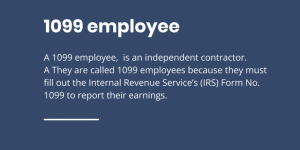Updated November 26, 2025
Understanding California Labor Code 226.8
California Labor Code 226.8 is a crucial piece of legislation that addresses the misclassification of workers as independent contractors instead of employees. This law is particularly significant in the context of California’s evolving labor landscape, where the distinction between independent contractors and employees has profound implications for workers’ rights and employer responsibilities.
California Labor Code 226.8 was enacted to combat the willful misclassification of employees. Misclassification occurs when an employer incorrectly designates a worker as an independent contractor, thereby denying them the rights and benefits afforded to employees. This law aims to protect workers from exploitation and ensure they receive fair treatment in the workplace.
Key Provisions
Definition of Willful Misclassification: The law defines willful misclassification as the intentional act of designating an employee as an independent contractor to avoid providing benefits and protections that employees are entitled to under California law.
Penalties for Violations: Employers found guilty of willful misclassification face significant civil penalties. The penalties range from a minimum of $5,000 to a maximum of $15,000 for each violation. If a pattern of violations is established, the penalties can escalate to between $10,000 and $25,000 per violation.
Prohibition on Charging Fees: Employers are prohibited from charging misclassified workers any fees for items that employees typically do not pay for, such as equipment, materials, or licenses.
The Importance of Proper Classification
Understanding the implications of worker classification is essential for both employees and employers. Misclassification can lead to a range of issues, including loss of wages, lack of benefits, and exposure to legal penalties for employers.
Employee Rights
Employees classified correctly under California law are entitled to various rights, including:
- Minimum Wage: Employees must be paid at least the state minimum wage.
- Overtime Pay: Employees are entitled to overtime pay for hours worked beyond the standard 40-hour workweek.
- Meal and Rest Breaks: Employees have the right to designated meal and rest breaks during their shifts.
- Workers’ Compensation: Employees are eligible for workers’ compensation benefits in case of work-related injuries.
Employer Responsibilities
Employers must ensure that they classify their workers correctly to avoid legal repercussions. This includes:
- Conducting Regular Audits: Employers should regularly review their classification practices to ensure compliance with labor laws.
- Providing Training: Employers should train their HR personnel and managers on the criteria for classifying workers correctly.
- Consulting Legal Experts: When in doubt, employers should seek legal advice to navigate the complexities of labor laws.
The ABC Test for Worker Classification
In California, the ABC test is used to determine whether a worker is an independent contractor or an employee. This test was established in the landmark case Dynamex Operations West, Inc. v. Superior Court and is codified in AB 5.
The Three Criteria of the ABC Test
To classify a worker as an independent contractor, the hiring entity must satisfy all three of the following conditions:
- Autonomy: The worker must be free from the control and direction of the hiring entity in performing their work.
- Nature of Work: The work performed must be outside the usual course of the hiring entity’s business.
- Independent Trade: The worker must be engaged in an independently established trade, occupation, or business that is similar to the work performed.
If any of these criteria are not met, the worker is classified as an employee, thus entitled to the protections and benefits associated with that status.
Consequences of Misclassification
Misclassification can have serious consequences for both employees and employers. For employees, it can mean the loss of wages, benefits, and legal protections. For employers, the repercussions can include hefty fines, legal fees, and damage to their reputation.
Legal Repercussions for Employers
Employers who misclassify workers may face:
- Civil Penalties: As mentioned earlier, penalties can range from $5,000 to $25,000 per violation.
- Back Wages: Employers may be required to pay back wages to misclassified employees, including overtime and benefits.
- Legal Fees: Employers may incur significant legal costs defending against claims of misclassification.
Employee Recourse
Employees who believe they have been misclassified have several options:
- Filing a Complaint: Employees can file a complaint with the California Labor and Workforce Development Agency (LWDA).
- Seeking Legal Counsel: Consulting with an employment lawyer can help employees understand their rights and options.
- Pursuing Legal Action: In some cases, employees may choose to pursue legal action against their employer for misclassification.
Posting Requirements for Employers
If a violation of Labor Code 226.8 is determined, employers are required to post a notice prominently on their website or at their business location. This notice must inform employees and the public of the violation and the changes made to avoid future misclassifications.
Content of the Notice
The notice must include:
- A statement that the employer has committed a serious violation of the law.
- Information about the changes in business practices to prevent further violations.
- Contact information for the Labor and Workforce Development Agency for employees who believe they have been misclassified.
The Role of Legal Counsel
Navigating the complexities of California labor laws can be challenging for both employees and employers. Legal counsel can provide invaluable assistance in understanding rights, responsibilities, and the implications of misclassification.
For Employees
Employees should consider seeking legal advice if they:
- Suspect they have been misclassified.
- Have not received the benefits and protections they are entitled to.
- Wish to pursue a claim against their employer for misclassification.
For Employers
Employers should consult legal experts to:
- Ensure compliance with labor laws.
- Conduct audits of worker classifications.
- Develop policies and training programs to prevent misclassification.
Conclusion
California Labor Code 226.8 plays a vital role in protecting workers from misclassification and ensuring they receive the rights and benefits they deserve. Both employees and employers must understand the implications of this law and the importance of proper worker classification. By staying informed and seeking legal counsel when necessary, individuals can navigate the complexities of labor law and protect their rights in the workplace.
If you need employment litigation, call Setyan Law at (213)-618-3655. Free consultation.






